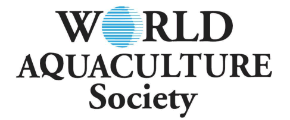INTENSIVE LAND-BASED FARMING OF RED AND GREEN MACROALGAE IN THE PACIFIC NORTHWEST: AN EVALUATION OF SEASONAL GROWTH AND PROXIMATE COMPOSITION
In the U.S., consumption of macroalgae is limited and occurs primarily in Hawaii and California. Most of this macroaglae is harvested from the wild. Regulatory restrictions, seasonal availability, and product quality issues limit increased use of wild macroalgae. Production of macroalgae from land-based cultivation systems can lower harvest costs, allow for precise control of rearing environments and product quality, and be used to capture nutrients from finfish aquaculture. In this study, we examined the seasonal growth and proximate composition of two species of red macroalgae (Chondracanthus exasperatus, and Palmaria palmata) and one species of green macroalgae (Ulva rigida), raised intensively in a land-based tank system. The water source for this study was from a land-based salmon rearing facility and tanks were additionally supplemented with nitrogen, phosphorous, and trace metals on a weekly basis.
The specific growth of all three species exhibited a similar pattern with the highest specific growth rate observed during summer months (C. exasperatus 7.8%, U. rigida 6.2% and P. palmata 8.2%). Growth of all three species was lowest around the winter solstice; however, senescence was only observed for U. rigida. There was a significant difference in protein content between the three species with the highest values found for U. rigida (29.5% 1.4% on dry weight basis). Lipid content varied between species (0.95% to 2.78%) with the highest lipid observed for U. rigida, which additionally varied with season (0.58% to 4.82%).
1.4% on dry weight basis). Lipid content varied between species (0.95% to 2.78%) with the highest lipid observed for U. rigida, which additionally varied with season (0.58% to 4.82%).













